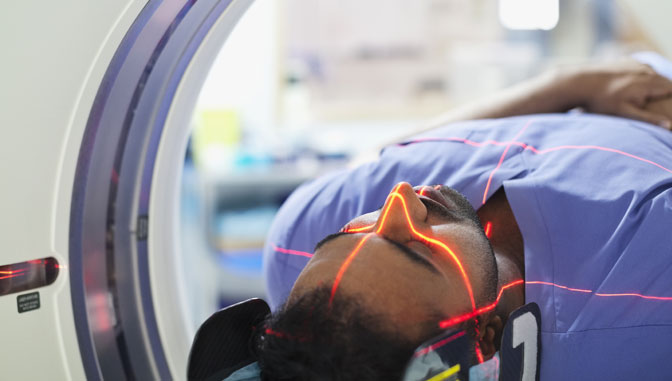Concussion Safety for Spring Activities

As the weather warms and we get a reprieve from cabin fever, it’s important to stay safe as we take our physical fitness outdoors. One common and preventable injury is concussion, which is a traumatic brain injury (TBI) that results from a direct or indirect force sustained to the head or body. Depending on the area of the brain affected, individuals may experience symptoms of headaches, dizziness, blurred vision, sleep issues, and increased symptoms while exercising. While this topic is often discussed in terms of sports-related injuries, it is important to keep in mind all areas where concussions can occur. As you gear up to exercise outdoors, keep in mind some of these safety reminders:
- Wear your helmet! Whether riding your bicycle to work or taking your motorcycle out to enjoy a spring ride, remember that helmets play an important role in the reduction of head injuries. According to the Centers for Disease Control and Prevention (CDC), about 26,000 brain injuries related to bike accidents are annually treated in children and adolescents in the emergency department. Also, wear reflective clothing when riding in low light and follow appropriate traffic laws.
- Inspect playground equipment each spring. About 10 percent of emergency department visits for playground-related injuries in children are for concussions or TBI. Seventy-five percent of these injuries occur on public playgrounds, most often on the monkey bars or other climbing equipment. Injury rates are among the highest in April and May. When looking for ways to keep your child safe, be sure to inspect the equipment, check that there is soft ground (mulch or sand) underneath, safety rails are in place where appropriate, and that your child is using equipment that is appropriate for their age.
- Reduce your risk of falls. The CDC reports falls are the most common cause of TBI in young children and older adults. For adults over the age of 65 especially, 1 in 4 will fall each year. These falls can unfortunately lead to a variety of health issues, including concussions. If you enjoy hiking or walking outdoors, be sure to wear appropriate footwear and scan for obstacles that may be in your path (such as potholes or tree stumps).
- Don’t forget about spring sports. While not the most common cause of brain injury amongst any age group, sports often make the news because of head injuries. While many of us commonly think of concussions as only occurring in football (think of the recent articles on the NFL or the movies “Concussion” or “League of Denial”), a study in USA Today shows girls’ soccer now eclipses boys’ football for the number of concussions. Use a helmet and other safety equipment, follow the rules of the game, and practice good sportsmanship.
If you suspect a concussion in yourself or a family member, find a health professional who can evaluate and provide treatment. A great training resource for brain injury for children is the CDC’s Heads Up Program.
Have a safe and healthy spring!
Disclaimer: The views expressed here are solely those of the author(s) and do not necessarily represent or reflect the views of Excelsior College, its trustees, officers, or employees.



